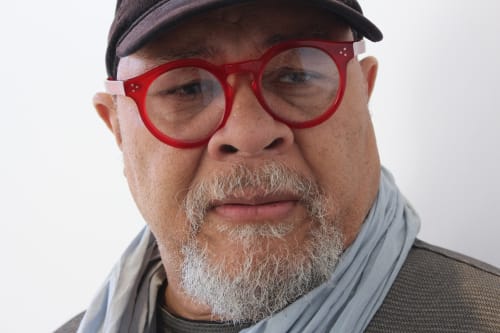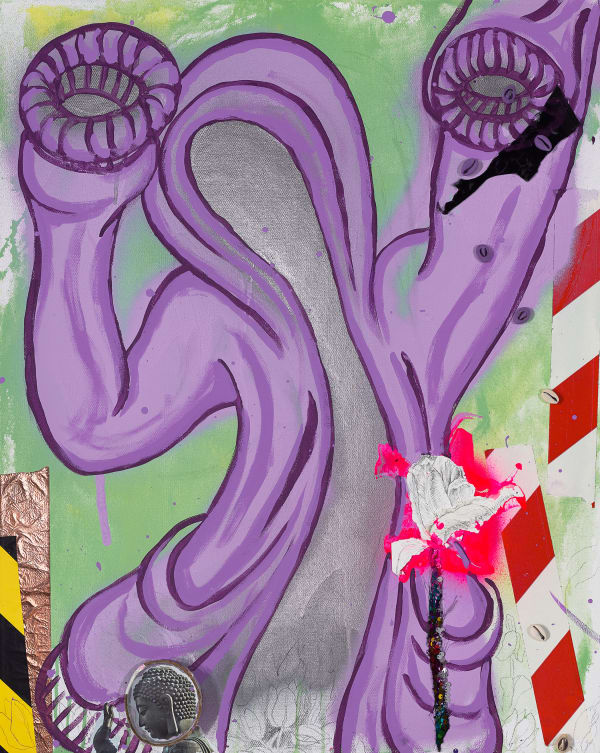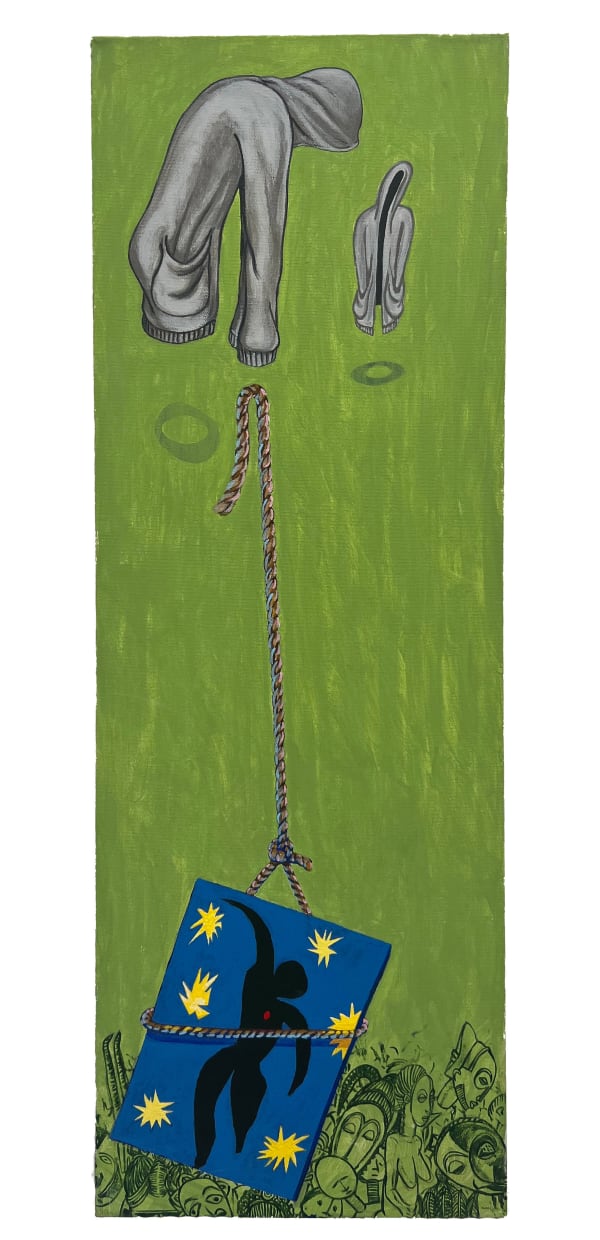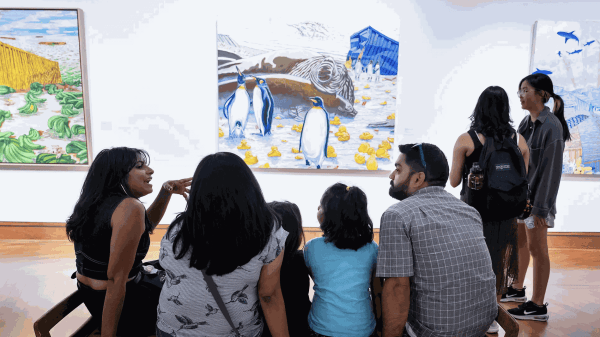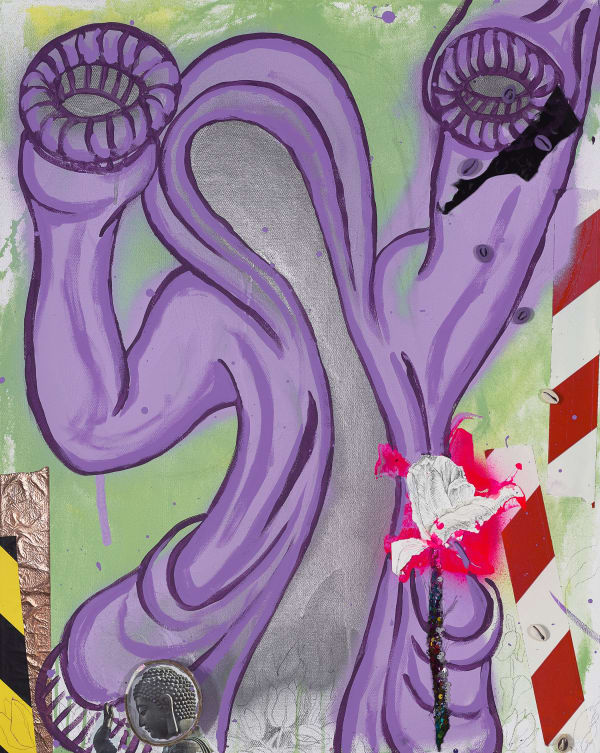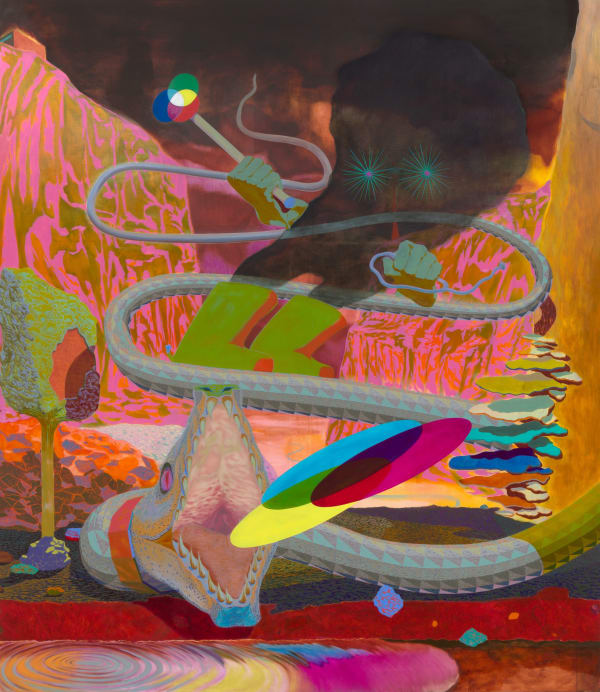Dewey Crumpler
Overview
Dewey Crumpler (b. 1949, Arkansas) is a Bay Area artist and educator creating surreal experiences that merge traditional painting techniques with video, mixed media and sculpture. His work examines themes of race, capitalism, and the history of oppression, which continue to transcend boundaries. Crumpler has long been preoccupied with how objects serve as sites for exploring what it means to be Black, shedding light on the aesthetic freedom that contributes to Black liberation.
In one extensive body of work, spanning over three decades Crumpler explores the energetic power of the tulip. This exploration began when he was on a trip to Amsterdam- he became inspired by the fields of tulips, and the singularity and resilience of the flower. Crumpler was attached to the physicality of the tulip, its simultaneous fulness and emptiness, as well as to its relationship to space. He recognized the flowers expression and used it as a vehicle that could translate emotional quality that lay within his paintings and permitted him to explore the forces of nature he was drawn to. Crumpler began to draw upon its diasporic nature of being spread across the world to the commodification of black bodies. Much like Africans, both of which were taken out of their original environment and shipped around the world and therefore transformed. Contemporary African Americans stand as enduring survivors of the peculiar institution of slavery; similarly, the tulip symbolizes resistance and is one of the most resilient flowers, maintaining its physical integrity amidst extreme climate conditions. With these subtle metaphors, Crumpler addresses the idea of subjugation in America and the way this condition was transformed into a state of cultural self-fulfillment and spiritual development.
Crumpler was an Associate Professor of Painting of the San Francisco Art Institute, where he taught Kehinde Wiley and Deborah Roberts. His practice began as a city muralist, studying under the late Pablo Esteban O’Higgins and David Alfaro Siqueiros. His work is included in permanent collections of the Oakland Museum of California; the Triton Museum of Art, CA; and the California African American Museum. Digital images of his murals were included in the 2017 Tate Modern’s Soul of a Nation. He received a National Endowment for the Arts Fellowship Grant, a Flintridge Foundation Award, and the Fleishhacker Foundation Fellowship Eureka Award. Recent exhibitions include Dewey Crumpler: Life Studies at the Dr. David C. Driskell Center at the University of Maryland and The Avant-Garde: Those Ahead of Their Time at Jenkins Johnson Gallery. He has a forthcoming retrospective at the Museum of African Diaspora (MOAD) in 2026, curated by Key Joe Lee as well as People Make This Place: SFAI Stories, at the San Francisco Museum of Modern Art opening July 2025.
Works
Press
-

Mapping Capitalism from Tulips to Trade
Driskell Center Exhibition Showcases Noted Black Artist Dewey Crumpler’s Complex VisionJessica Weiss, University of Maryland, December 2, 2024 -

Dewey Crumpler
Richmond Art CenterArtForum, September 23, 2023 -

Dewey Crumpler at Jenkins Johnson
Renny Pritkin, SquareCylinder, March 10, 2023 -

What to see in San Francisco galleries this month
Max Blue, San Francisco Examiner, March 3, 2023 -

Art Professor Dewey Crumpler Defends Victor Arnautoff’s WPA Murals
National Coalition Against Censorship
Exhibitions
-

In Their Hands
7 Jun - 2 Aug 2025SAN FRANCISCO In Their Hands honors the time, skill, and dedication required to be an artist. The years of training, experimentation, and persistence needed to create something by hand embody...Read more -

The Avant-Garde: Those Ahead of Their Time
3 Oct - 21 Dec 2024October 3 - November 23, 2024 Opening Reception: October 3, 5:30PM-7:30PM Jenkins Johnson San Francisco presents The Avant-Garde: Those Ahead of Their Time, on view from Thursday, October 3 through...Read more -

The Culture From Which I Sprang
13 Jul - 21 Sep 2024Jenkins Johnson Gallery announces its West Coast exhibition The Culture From Which I Sprang , commemorating the 60th Anniversary of the Civil Rights Act of 1964. It features work by...Read more -

Summertime...
Wesaam Al-Badry, Kevin Cole, Dewey Crumpler, Alex Jackson, Wycliffe Mundopa, Gordon Parks, and Raelis Vasquez 8 Jul - 25 Aug 2023Jenkins Johnson Gallery is pleased to announce Summertime..., a cross-generational and multi-cultural exhibition featuring Wesaam Al-Badry, Kevin Cole, Dewey Crumpler, Alex Jackson, Wycliffe Mundopa, Gordon Parks, and Raelis Vasquez. Works...Read more -

In Space Time
Dewey Crumpler 4 Mar - 29 Apr 2023Jenkins Johnson Gallery is pleased to present a solo exhibition of Dewey Crumpler's work titled In Space Time . In Space Time represents a component of a four-part, 30-year exploration...Read more -
Summertime
Gordon Parks, Ming Smith, Alex Jackson, Dewey Crumpler, Lola Flash, Lisa Corinne Davis, Nnenna Okore, Ben Aronson, and Scott Fraser 19 Aug - 10 Sep 2022Read more -

Transcontinental Dialogues
20 Jan - 30 Apr 2022Jenkin Johnson Gallery, San Francisco, is thrilled to present Transcontinental Dialogues , featuring the work of Dewey Crumpler, Wadsworth Jarrell, Alex Jackson, Blessing Ngobeni, and Raelis Vasquez. The exhibition will...Read more -

What's It All About
Anthony Olubunmi Akinbola, Patrick Alston, Carmen Neely, Esteban Ramón Pérez, Emma Soucek, Jason Stopa, Dewey Crumpler and Lisa Corinne Davis 17 Jul - 28 Aug 2021By Appointment Only: Jenkins Johnson Projects, New York, is pleased to present What’s It All About . A group exhibition featuring the works Anthony Olubunmi Akinbola, Patrick Alston, Carmen Neely, Esteban...Read more
Art Fairs
-
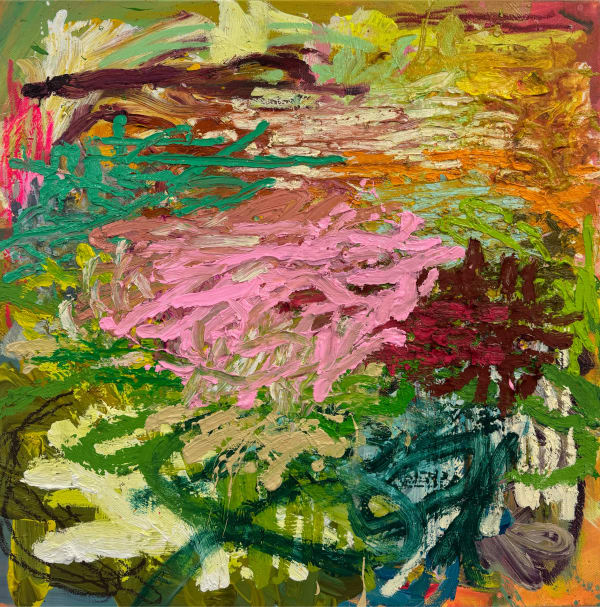
FOG Design + Art 2025
23 - 26 Jan 2025Jenkins Johnson is pleased to participate in FOG Design+Art 2025. Join us in Booth 107 for the Preview Gala on Wednesday January 22 . The...Read more -
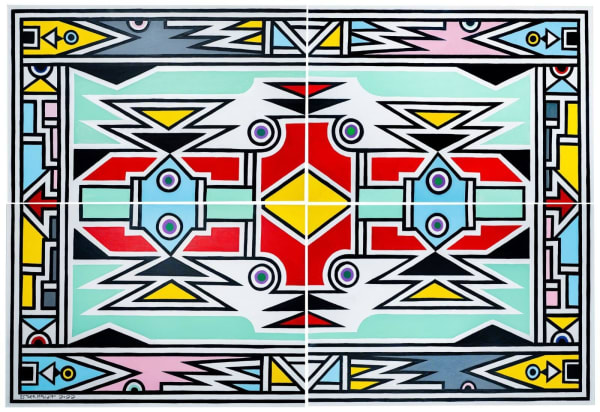
Art Basel Miami Beach 2024
6 - 8 Dec 2024Jenkins Johnson Gallery is pleased to participate in the 2024 edition of Art Basel Miami Beach . This year is our largest and most ambitious...Read more -
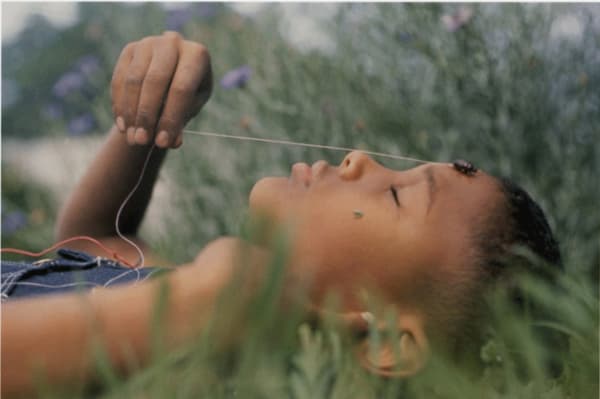
Art Basel 2024
Booth C12 10 - 16 Jun 2024Jenkins Johnson Gallery presents works by Patrick Alston, Mustafa Ali Clayton, Dewey Crumpler, Lisa Corinne Davis, David Driskell, Wadsworth Jarrell, Mary Lovelace O’Neal, Ming Smith,...Read more -
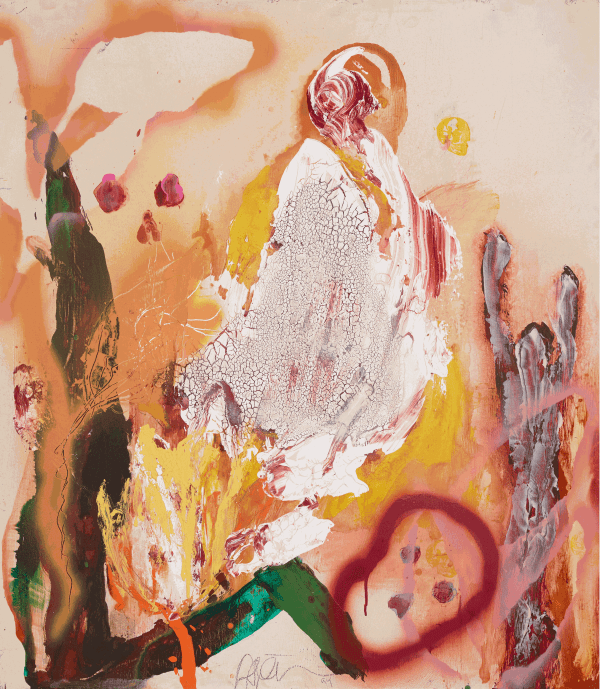
Frieze New York
New York, NY 1 - 5 May 2024Jenkins Johnson Gallery presents Bay Area artist Dewey Crumpler: Exploration of Two Objects a solo exhibition of a four-part, thirty-year expression of tulips and the...Read more -
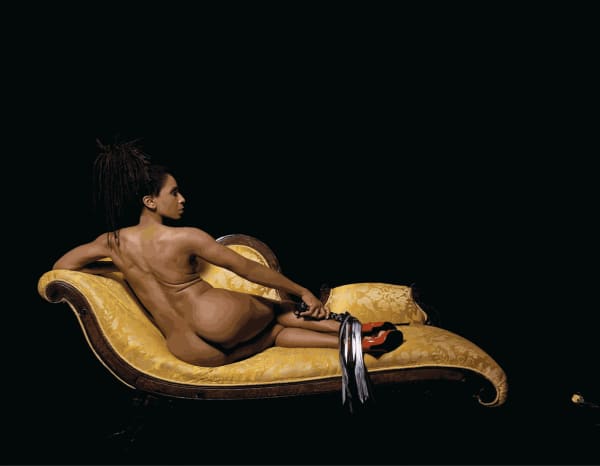
FOG Design+Art
San Francisco, CA 18 - 21 Jan 2024Jenkins Johnson will present eleven artists of the African Diaspora that include works by Adrian Burrell, Renee Cox, Dewey Crumpler, David Driskell, Lola Flash, Violet...Read more -
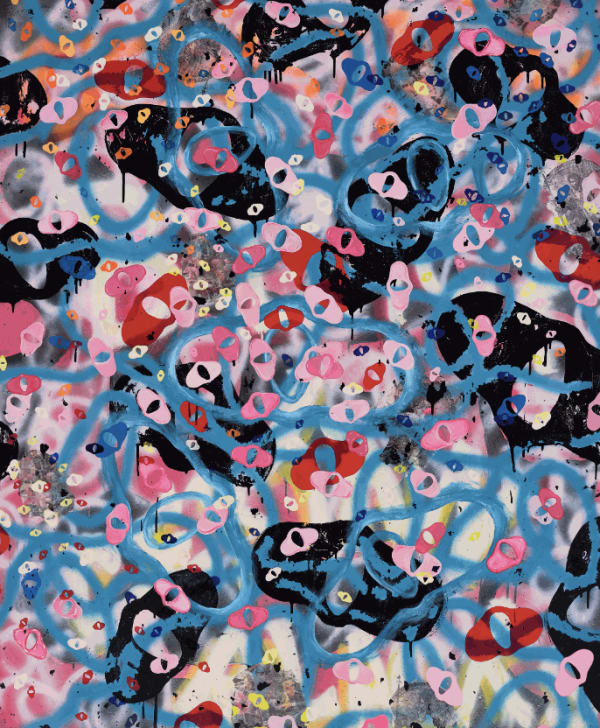
Art Basel | Miami Beach
Miami, FL 6 - 10 Dec 2023Jenkins Johnson Gallery will participate in Art Basel Miami Beach, December 8 - 10, 2023 Booth B31. We will feature artists that explore social and political issues of the African Diaspora by connecting past and current moments: Mary Lovelace O'Neal, Wadsworth Jarrell, Gordon Parks, Ming Smith, Patrick Alston, Adrian Burrell, Dewey Crumper, Lisa Corinne Davis, Violet Fields, Alex Jackson, Blessing Ngobeni, Gregory Rick, Enrico Riley, and Raelis Vasquez. Jenkins Johnson Gallery will be participating in the Kabinett sector with a solo presentation of works on paper by Mary Lovelace O'Neal, featuring her iconic Lampblack (1970's) and Desert Women (1990's) series. In the Lampblack drawings she layers black charcoal and pastel, allowing slivers of negative space to invade the surface. These drawings speak to her affair with an "uncluttered minimalist viewpoint", invoking both a cultural and aesthetic sentiment. In Desert Women series, Lovelace O'Neal portrays garments worn in the Sahara Desert in Egypt and the Atacama Desert in Chile. She studied with master printmaker James Lesene Wells and at The Robert Blackburn Printmaking Workshop. Lovelace O'Neal creates based on feeling and perception, forming moments of fleeting light. Her work is in museums including the Art Institute of Chicago, San Francisco Museum of Modern Art, Baltimore Museum, DeYoung Museum, and Brooklyn Museum. She has an upcoming solo exhibition at the San Francisco Museum of Modern Art in Spring 2024.Read more -
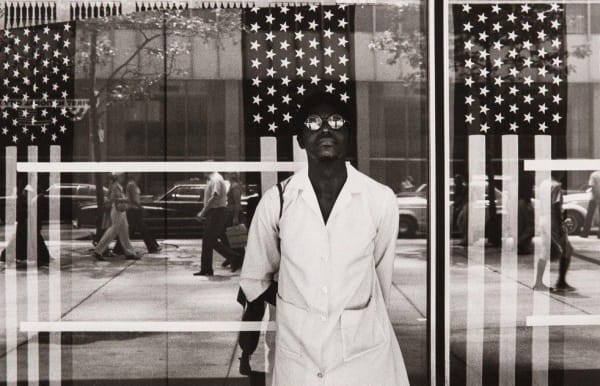
Art Basel
Basel, Switzerland 13 - 18 Jun 2023Jenkins Johnson Gallery is excited to announce its participation in the 2023 edition of Art Basel. Our booth will be located at C11, the fair...Read more -
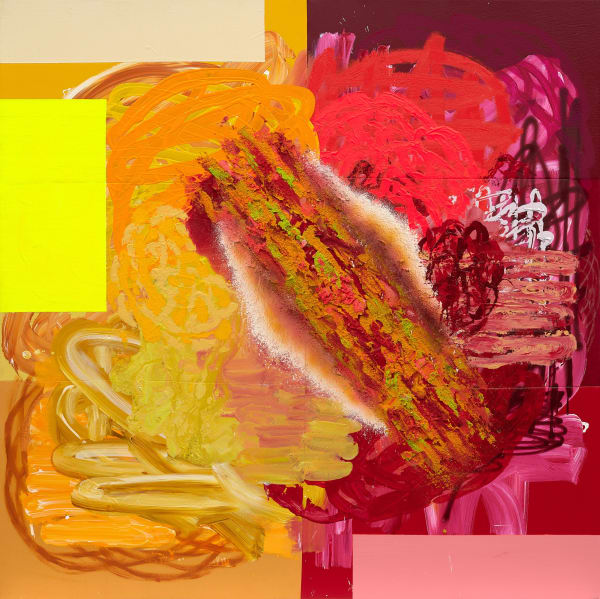
EXPO Chicago
Chicago, IL 13 - 16 Apr 2023Jenkins Johnson Gallery is pleased to announce its participation in the 2023 edition of EXPO Chicago which will take place at the Navy Pier's Festival...Read more -
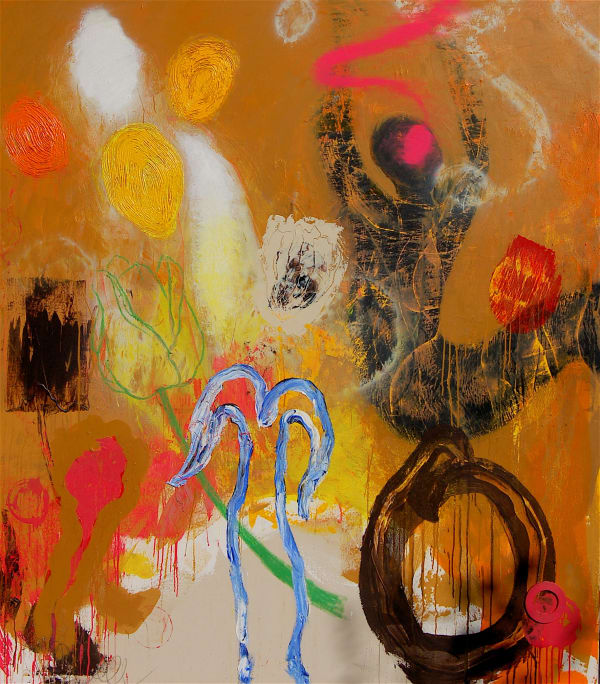
FOG Design+Art
San Francisco, CA 18 - 22 Jan 2023Jenkins Johnson Gallery was pleased to present Dewey Crumpler: Tulip Memories, a solo presentation at FOG Design + Art. The fair took place January 19...Read more -

FOG Design + Art
San Francisco, CA 19 - 23 Jan 2022Jenkins Johnson Gallery exhibited at FOG Design + Art, which occured January 19-23, 2022 at Fort Mason Center. We presented the works of Dewey Crumpler,...Read more -
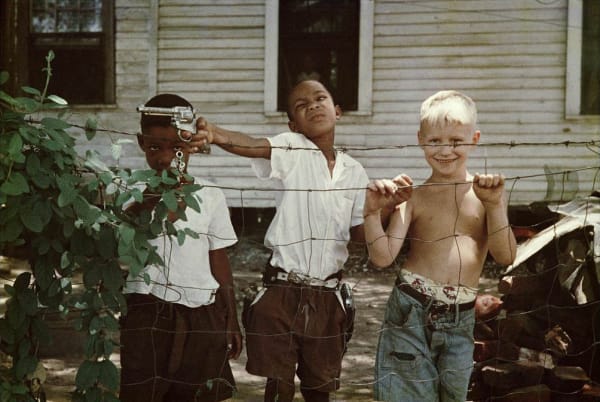
Art Basel Miami Beach
Miami, FL 1 - 4 Dec 2021Jenkins Johnson will present artists who explore social and political issues of the Black Diaspora by bridging historical and contemporary moments: Jae and Wadsworth Jarrell,...Read more -
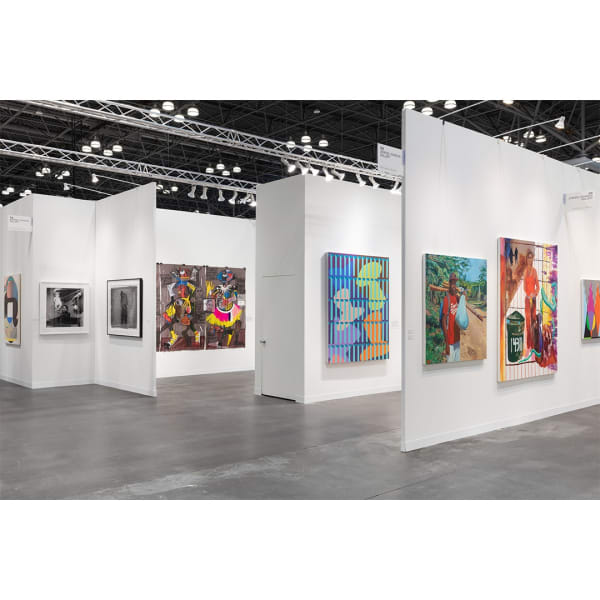
The Armory Show
New York, NY 9 - 12 Sep 2021Jenkins Johnson Gallery was pleased to participate in The Armory Show 2021 at the Javits Center from September 9th - 12th. We presented a selection...Read more -
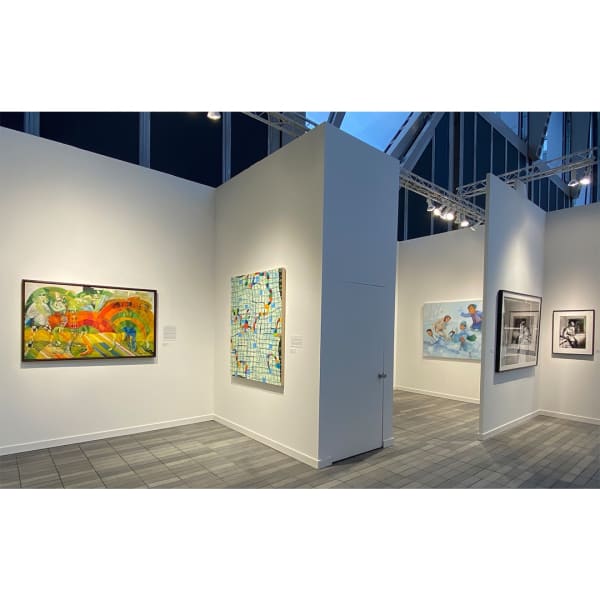
Frieze New York
New York, NY 5 - 9 May 2021Jenkins Johnson presented artists who explore social and political issues of the Diaspora by bridging past and contemporary moments: Wadsworth Jarrell, Gordon Parks, Ming Smith,...Read more -
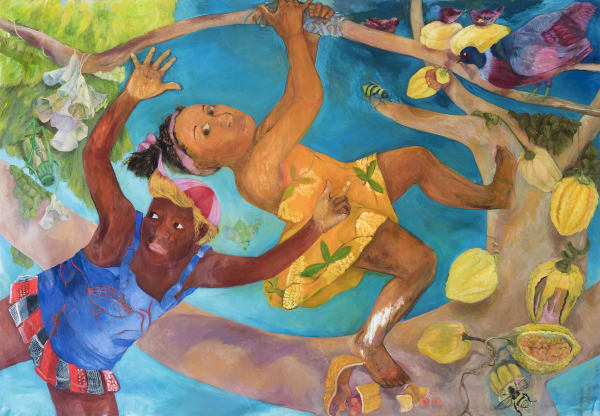
EXPO Chicago
Chicago, IL 8 - 12 Apr 2021Jenkins Johnson Gallery was proud to participate in EXPO CHGO ONLINE 2021. Our presentation, Reflections, featured the work of Dewey Crumpler, Lisa Corinne Davis, Alex...Read more -
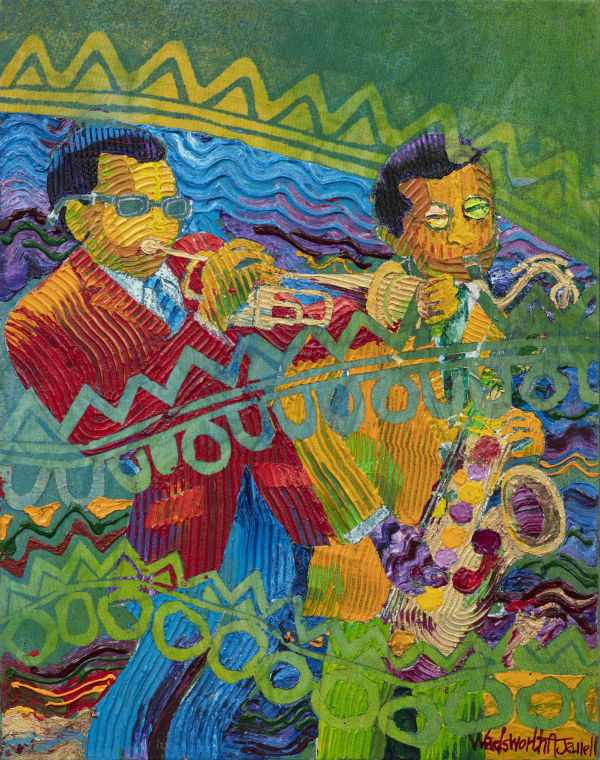
FIAC
Online Viewing Room 4 - 7 Mar 2021Jenkins Johnson Gallery was pleased to participte in FIAC's Online Viewing Rooms 2021. We presented a selection of works by Dewey Crumpler, Lisa Corinne Davis,...Read more -
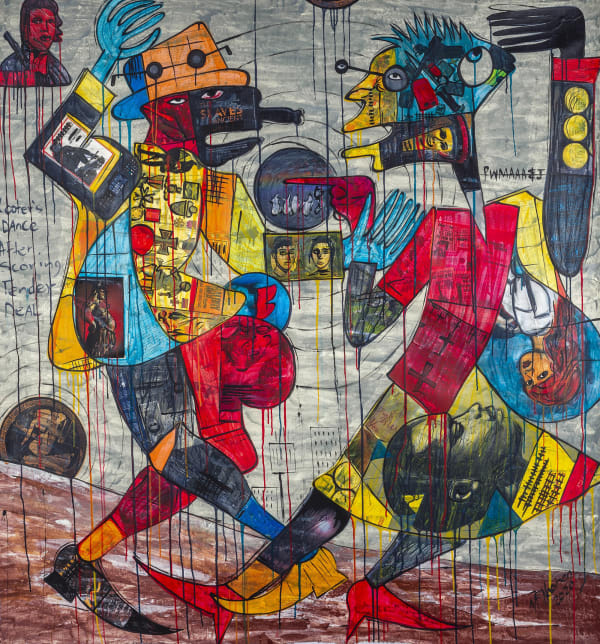
South South Veza
Online Viewing Room 23 Feb - 7 Mar 2021Jenkins Johnson Gallery was proud to participate in South South Veza. The virtual platform was live from February 23, 2021 at 1pm GMT with a...Read more -
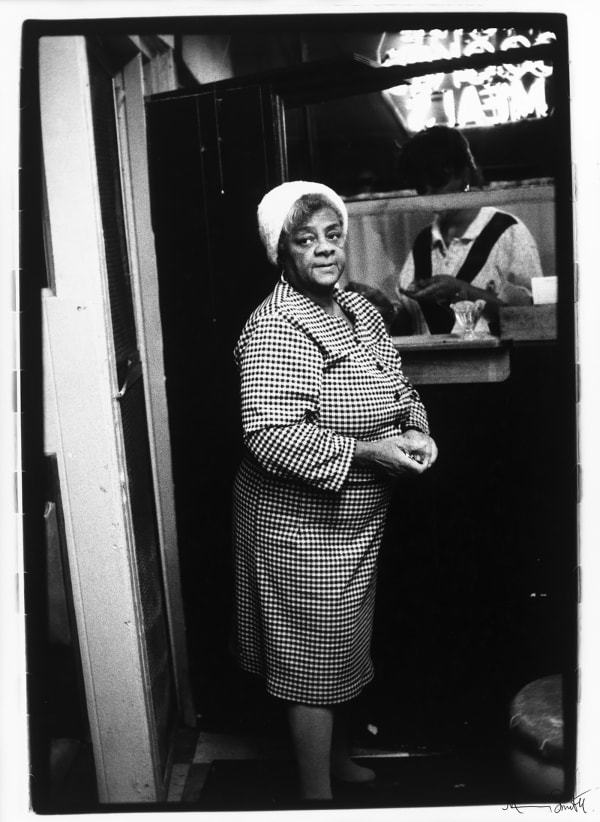
Frieze London
London, England 7 - 16 Oct 2020Jenkins Johnson’s artists explore social, environmental and political issues, connecting past and present moments. Twentieth century and contemporary artists are: Kwame Brathwaite, Lisa Corrine Davis,...Read more

